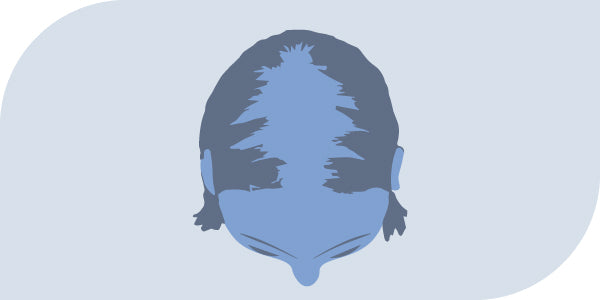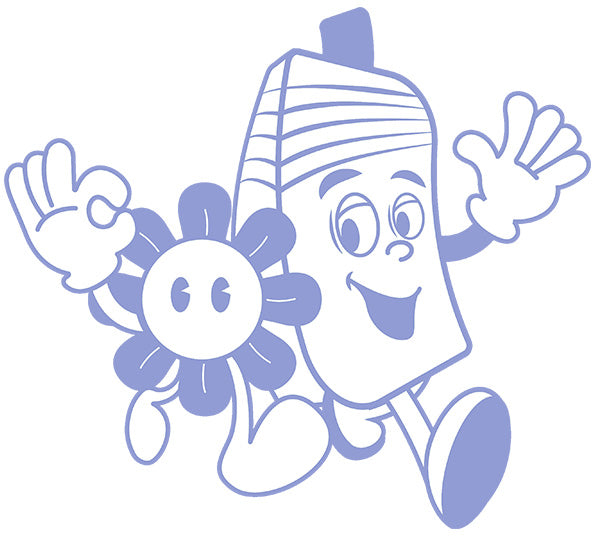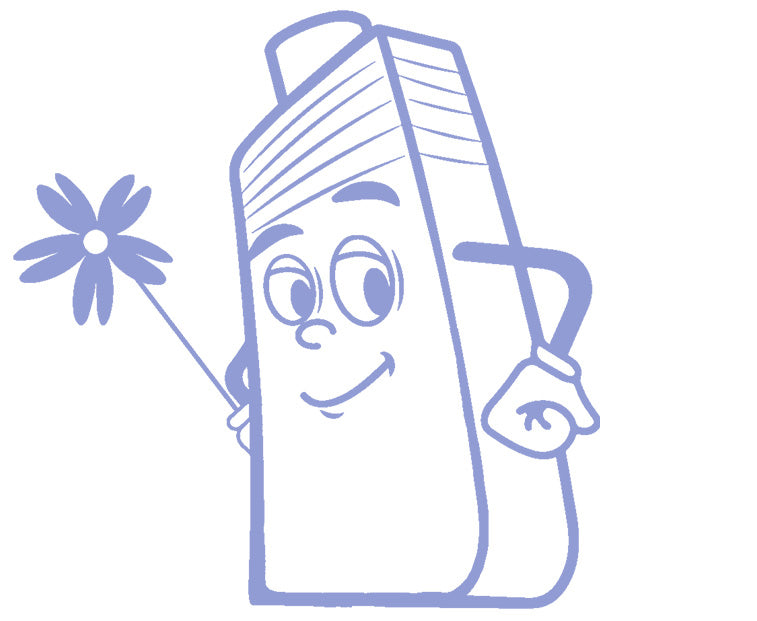Men are especially prone to pattern baldness, or androgenetic alopecia, as the condition is known in the medical world. But what actually causes people to suffer from androgenetic alopecia in the first place? Are there ways to prevent or reduce its effects?
In this guide, we’ll go over everything you need to know about androgenetic alopecia, also called hereditary hair loss. We’ll also take a look at several ways you can transform your hair care regimen to not only improve the quality of your hair but reduce the effects of androgenetic alopecia too. But first, we need to cover a few basics.
Index
What is Androgenetic Alopecia?
Androgenetic alopecia goes by many names: Hereditary hair loss, pattern baldness, female-baldness, etc. But what is this condition, exactly? Well, for starters - it’s genetic. However, it doesn't mean you can't do anything about it.

A very common form of hair loss for men (and women, to a lesser extent) is androgenetic alopecia. Various sources estimate that androgenetic alopecia affects over 6.5 million men in the United Kingdom alone. Most men will experience some form of hereditary hair loss by the time they reach their 50s or 60s, while some may start to experience this by their late 20s. So if you’re noticing thinning hair, rest assured that you’re in good company.
What Does Androgenetic Alopecia Look Like?
Although conditions that create hereditary hair loss like androgenetic alopecia can affect those who suffer from it in a variety of ways, there are several symptoms men tend to share in common. First, androgenetic alopecia causes men to experience a receding hairline. This is often followed by a thinning of the hair around the crown and temple area and can continue until the bald patches on either side of the head meet. Throughout this process, the hair gradually becomes thinner and eventually leads to total baldness in some cases.
It’s important to remember that everyone who suffers from hereditary hair loss experiences it differently, so try not to compare yourself to others if you find yourself struggling with androgenetic alopecia.
In addition to its outward characteristics, androgenetic alopecia can sometimes be an indicator of other problematic conditions inside the body. According to the American NIH, androgenetic alopecia in men has been associated with other medical conditions such as diabetes, coronary heart disease and hypertension. So if you’re experiencing hair loss, it might be a good time to schedule a checkup with your doctor.
What Causes Androgenetic Alopecia?
Now that we know what androgenetic alopecia is and how it commonly manifests itself, let’s take a closer look into how biology itself plays a part. While a variety of both environmental and genetic factors can influence the occurrence and severity of androgenetic alopecia, it mostly boils down to your individual genes and family history.
Researchers have found that a type of hormone called androgens are mostly to blame for the effects of hereditary hair loss. One particular type of androgen called dihydrotestosterone (or DHT) is the main culprit and those who experience androgenetic alopecia have a genetically determined sensitivity to the effects of DHT.
Here’s how DHT works. It’s a hormone derived from testosterone (a male sex hormone) that, in normal amounts, contributes to men’s overall health and development, especially during puberty. However, abnormally high amounts of DHT can cause hair loss. As more DHT flows through the bloodstream, it can easily link up to receptors on the hair follicles in your scalp, causing them to shrink. Over time, this shrinkage impedes your scalp’s ability to support and maintain a healthy, full head of hair.
Does DHT Cause Hair Loss?
On its own, DHT isn’t a bad thing. In fact, it’s a normal hormone that helps contribute to healthy growth during puberty. But in high amounts, it can exaggerate hereditary hair loss conditions like androgenetic alopecia. To understand how DHT causes hair loss, it helps to understand the normal hair growth cycle.
Each strand of hair on your body is encased in a follicle. Think of hair follicles as tiny capsules that provide essential nourishment to each hair while anchoring hair firmly to the skin. The hair within each follicle goes through a growth cycle that typically lasts 2-6 years (even if you cut or shave your hair).
At the end of each cycle, each hair enters a resting period and falls out a few months later. Afterward, the empty follicle produces a new hair. So how does DHT fit into all of this?
What is DHT's Role in Androgenetic Alopecia?
Like we mentioned before, during a normal, healthy hair growth cycle, the hair grows, matures, then eventually falls out before being replaced by another hair. But when the body starts converting too much testosterone into DHT, the hair growth cycle can start experiencing some roadblocks.
Higher levels of DHT have been shown to shrink your hair follicles, which can not only shorten your hair’s overall growth cycle but also cause hair to appear thinner and become more prone to breakage. What’s worse, DHT can also make it harder for you to grow new hairs after the old ones fall out.
On the flip side, higher levels of DHT and testosterone have been linked to fuller beards. That's why many guys with thinning hair have awesome beards! Read more about beard growth and beard oils here.
Is Androgenetic Alopecia Permanent?
The short answer is yes. Although there are a variety of ways people can treat or possibly reverse the effects of androgenetic alopecia, it is a permanent condition.
And because androgenetic alopecia is a genetic condition that is passed down, it cannot be cured either.
However, while you may have been born genetically predisposed to hereditary hair loss conditions like androgenetic alopecia, there are several things you can do to stop DHT from wreaking havoc on your hair.
5 Natural DHT Blockers
Hereditary hair loss causing androgenetic alopecia can seriously lower your confidence and ability to feel good about yourself. However, it’s possible to incorporate a DHT blocker into your hair care routine and lifestyle to counteract the negative effects of hereditary hair loss.
A healthy diet and life style can make a huge difference for normalising the hair growth cycle.
Below are 5 natural ingredients that act as a DHT blocker when used properly.

Biotin:
Biotin is used in a variety of hair growth supplements and treatments, and for good reason. This water-soluble B vitamin is an effective DHT blocker and has been shown to help promote hair growth and decrease hair loss.
Pumpkin Seed Oil:
Pumpkin seed oil is a particularly effective DHT blocker, as shown by a double-blind study that, over time, saw a 40% increase in average hair count in men treated with the oil.
Caffeine:
Who knew you could get better hair from enjoying your daily cup of coffee? Well, drinking coffee alone won’t necessarily help you grow more hair, but the caffeine in your coffee can actually act as a DHT blocker. In test subjects of both sexes, caffeine has been shown to promote hair growth.
Vitamins B12 & B6:
Along with biotin, other B vitamins like B12 and B6 can work as an effective DHT blocker when taken in hair growth supplements and can improve overall scalp health in individuals with androgenetic alopecia.
Rosemary Oil:
Lastly, another DHT blocker of note is rosemary oil, which has been shown in studies to promote hair growth and increase hair count in participants.
Now that we’ve explained what a DHT blocker can do to restore and renew your hair, let’s talk about androgenetic alopecia in women.
Androgenetic Alopecia in Women
While hereditary hair loss overwhelmingly affects men, we can’t dismiss the very real effects of androgenetic alopecia in women. Unlike with men, androgenetic alopecia in women doesn’t cause pattern baldness. Instead, androgenetic alopecia in women results in a thinning of hair all around the head that very rarely leads to complete baldness. According to the NHS, around half of women in the UK experience some form of hereditary hair loss after the age of 65. Thankfully, androgenetic alopecia in women can be treated in much the same way as in men.
Other Types of Hair Loss
Along with androgenetic alopecia, there are a variety of other conditions that can cause or worsen hereditary hair loss.
Alopecia Areata:

This condition causes sudden hair loss in circular patches. It’s brought on when the immune system begins attacking the hair follicles.
Alopecia Universalis:

An advanced form of alopecia areata, alopecia universalis is a form of hereditary hair loss that results in the complete loss of hair all over the head and body.
Trichotillomania:

This disorder causes individuals to suffer from impulsive urges to pull out their own hair.
Telogen Effluvium:

This is a reversible condition that can be triggered after a stressful or traumatic experience. Those affected by telogen effluvium typically experience temporary hair loss around the top of the scalp.
Scarring Alopecia:

This is a more serious form of alopecia in which scarring of the hair follicle occurs along with hair loss.
3 Other Causes of Hair Loss
In addition to androgenetic alopecia and the conditions we mentioned above, hair loss can also be caused (or made worse) by things like:
Stress and illness:
Too much stress isn’t good for us on a variety of levels. Increased stress levels, prolonged illness and certain thyroid diseases can all impede scalp health and lead to hair loss.
Improper hair care:
Washing your hair too often and certain cosmetics procedures like perms, bleaching and dyeing of hair can cause your hair to become thin and brittle or even fall out.
To avoid these negative effects, make sure you’re using a shampoo that’s formulated to stimulate hair growth and keep hair follicles healthy. It’s also a good idea to treat your scalp to a nourishing protein-restoring treatment every so often to promote new hair growth.
Diet:
Along with proper hair care, one of the most important factors in maintaining your hair health is your diet. Make sure to include plenty of vitamin and mineral-rich foods in your everyday diet to reap the maximum benefits for not just your hair but your skin and nails as well!
In particular, try to include foods rich in biotin and protein like berries, dark greens, nuts and beans, and avoid consuming too much sugar.
Whatever your experience with androgenetic alopecia has been, it’s important to remember that there are things you can do to improve your hair situation. From taking hair growth supplements to creating a healthier overall hair care routine, there are a variety of ways to fight the effects of hereditary hair loss and get fuller, thicker hair.




























































